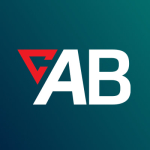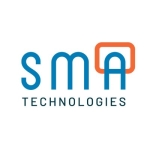Redwood RunMyJobs is primarily deployed for orchestrating and scheduling tasks. It caters to a diverse range of environments, spanning enterprise IT systems, data centers, and manufacturing facilities. The solution strives to streamline the administration of intricate workflows and assignments, guaranteeing their prompt and effective execution.
Although the details of the solution's environment are unspecified, it's clear that it has broad applicability across diverse industries and sectors. From expansive IT infrastructures to manufacturing plants and financial institutions, any environment grappling with intricate job scheduling and automation stands to gain from Redwood RunMyJobs.
The solution automates seamlessly. Additionally, Redwood aids in streamlining the development and deployment processes, facilitating the efficient delivery of software products.
With its ingenious features, Redwood enables the seamless integration of code changes, ensuring continuous testing and deployment. This not only saves time and effort but also guarantees a heightened level of quality in the final product.
Moreover, Redwood's intuitive interface allows for effortless scheduling of pipelines, granting users unrivaled flexibility and control over their software development lifecycle.
Equipped with comprehensive notification capabilities, Redwood ensures that stakeholders are promptly informed of any critical events or issues, enabling swift action and resolution.
Redwood, a marvel in the realm of business Process Automation, reigns supreme in the art of scheduling, monitoring, and birthing reports.
It conjures simplicity from the depths of complexity, effortlessly shouldering burdensome workloads. Its integration features allow for connectivity, linking with other third-party applications, and orchestrating the elegant exchange of data.
The solution has an astonishing array of mind-boggling functions, including good reporting features, monitoring and alert services, a captivating user interface, boundless machine learning capabilities, and an unparalleled customer support system.
The customer support, a formidable legion of troubleshooters, stands ready to lend their expert guidance.
The user interface has an intuitive design.
I have not noted any downsides.
I've used the solution for seven months straight.
Intensive testing aids in detecting and resolving potential issues prior to deployment.
Expandability gauges how effectively a system can handle heightened workload or demand. It's frequently divided into three categories, infusing additional resources (such as memory, CPU, or storage) into a solitary machine. It's generally simpler to execute, yet it may face limitations imposed by the hardware itself.
My company dabbled with alternative software in the early stages, but this solution emerged as a solution that satisfied all of our intricate requirements. With its unparalleled capabilities and ingenious features, it increases efficiency and productivity.
Ensuring privacy, security, and ethical considerations can convolute the setup process, particularly when handling sensitive data or deploying systems in regulated industries
The actual return on investment hinges on the seamless integration of capabilities into workflows and processes, as well as adeptness in fulfilling user requirements.














